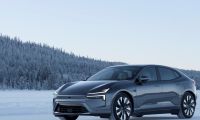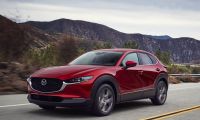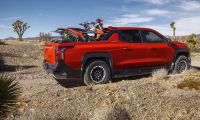Will the number sold increase or not? It all depends on keeping lowering the price of purchase. Can the US car market absorb over 1.8 million of plug-in vehicle, PEV next year considering the economy and can the grid handle it.
The Grid Is OK. First things first, the grid can absorb the influx. Most studies shows it can as long as people charge at home at night, which so far 90% do. Second, 1.8 million plug-in vehicles is a drop in the water compared to the 14,785,936 cars and light trucks sold last year, according to WardsAuto.
Weak Economy & What Drivers Really Want. Despite reports, the “economy” is not great, despite Wall Street trading. It is still fragile and not many are flocking to dealerships to buy new cars. Yet, interest in plug-in vehicles, whether hybrids, plug-in hybrids, PHEV and pure electric vehicles, EV is growing according to the latest studies. What drivers really are looking for according the latest studies is energy and fuel economy. However small the percentage is, it weighs heavily on the decision factor.
According to senior research analyst Dave Hurst on the DailyFinance site: "More than a quarter of all annual U.S. PEV sales will be in the top five metropolitan areas for PEV sales - New York, Los Angeles, San Francisco, Seattle, and Portland. But thanks to a combination of positive attitudes towards green driving, high fuel prices, and state government support, California metropolitan statistical areas will account for more than one in five PEVs sold." It’s obvious everything will happen where most buyers are found, large cities.
The Automobile Manufacturer Dilemma. The trick for carmakers is to find a business model that allows them to produce plug-in vehicles and sell them at a loss before such vehicles take on a significant percentage of the market. In other words, carmakers have to weather the storm, and think into the distant future. The egg and chicken dilemma is not over yet as a few studies shows a strong correlation between buying a PEV and its available charging network. Carmakers will have to continue strategic alliances with charging station manufacturers and cities to build such networks, thus allowing the use of plug-in vehicles.
The report also highlights some interesting tidbits. For instance, it forecasts 400,073 annual sales in the United States and 107,146 in Canada by 2020. In a nutshell, watch for California, New York, Florida, and Texas to lead the sales numbers. Texas you say? See my previous article here; The Top Three Electric Car Cities That Will Surprise You.
The report continues to predict that by 2020, Hawaii will have the highest penetration rate of PEVs as a percentage of all light duty vehicle sales, of which New York City, Los Angeles, and San Francisco are anticipated to have the largest sales of PEVs through the decade.
The J.D. Power and Associates Avoider Study. Another study from J.D. Power and Associates Avoider Study shows after questioning about 31,000 owners who registered new vehicles in May 2012 that fuel economy remains a major consideration. Even if 15% of those surveyed felt fuel economy was their #1 criteria for new cars, it outranked any other concerns. The report also showed another disturbing figure, other competing factors; styling, reliability, and cost kept them from actually making a decision. When it comes to hybrids, PHEV and EVs, price is still an issue and certain manufacturers have started to reduce their price. Nissan already dropped its Leaf price, others will soon follow. In this case, 36% of consumers avoided these vehicles because of their price.
Interestingly enough, hybrids, PHEV and EVs owners bought them because they prioritize fuel economy first, and eco-friendliness after. In other words, 95% felt fuel economy was the major factor behind their purchase, with 62% focusing on reduced environmental impact their vehicle has.
Are We There Yet? Maybe not, but we are inching our way there. Car manufacturers are caught up in a long distance run, something they haven’t dealt with in a long time. It boils down to who can offer the cheapest, best fuel economy car, be it gasoline, hybrid, plug-in hybrid or electric vehicle.












Comments
Link to 'The Top Three
Permalink
Link to 'The Top Three Electric Car Cities That Will Surprise You.'... doesn't work Nicolas...> The requested page could not be found.
Your getting to be my 'go to' guy for the reporting and discussion of EV's and PHEV's.
Don't drop that torch, Nicolas. You are helping bring EV's into the mainstream.
Regards...Tre
Thanks Tre, I appreciate the
Permalink
In reply to Link to 'The Top Three by Three Deuce (not verified)
Thanks Tre, I appreciate the encouragement. The link works now.
I'm working on a few things on the side in order to further EV awareness. You can contact me on Gmail if you would like to be involved. Nicolas